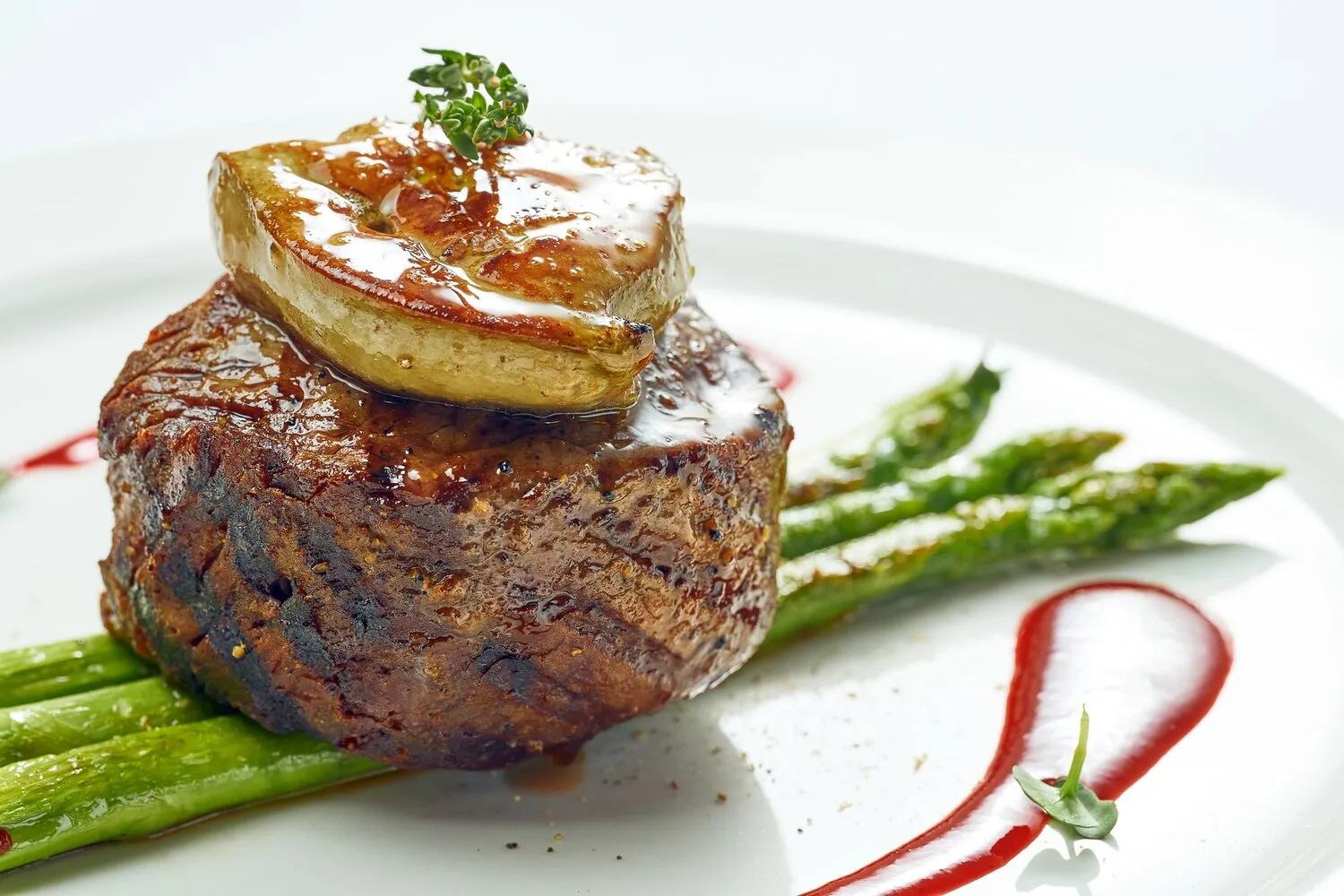
Dry Aged Ribeye
Dry aged ribeye steak, often mentioned in reviews as a highlight of the menu.
Nutrition Facts
* The % Daily Value (DV) tells you how much a nutrient in a serving of food contributes to a daily diet. 2,000 calories a day is used for general nutrition advice.
The practice of aging meat dates back centuries, primarily as a method of preservation before refrigeration. Dry aging, specifically, developed as butchers sought to enhance the flavor and tenderness of beef. The ribeye cut, prized for its marbling and rich flavor, became a natural candidate for this technique.
Dry-aged ribeye has become a symbol of culinary excellence and a premium offering in steakhouses worldwide. It represents a commitment to quality ingredients and skillful preparation.
Fine Dining Staple
Dry-aged ribeye is frequently featured on the menus of upscale restaurants and steakhouses, often commanding a higher price due to the time, expertise, and loss of volume involved in the dry aging process.
Celebratory Meal
Due to its rich flavor and premium status, dry-aged ribeye is often chosen for special occasions and celebrations, representing a luxurious dining experience.
Beef Culture
The appreciation for dry-aged beef reflects a growing interest in the source, quality, and preparation of meat, highlighting the importance of ethical and sustainable farming practices in some circles.
Dry-aged ribeye boasts a complex, concentrated beef flavor profile. Expect a combination of savory, nutty, and slightly funky notes, with an intensified umami taste.
The dry aging process involves storing beef carcasses or primal cuts in a temperature-controlled environment with controlled humidity. This allows enzymes naturally present in the meat to break down muscle tissue, resulting in increased tenderness. Simultaneously, moisture evaporates from the surface, concentrating the remaining flavors. The process develops flavors often described as nutty, cheesy, or even reminiscent of blue cheese, alongside a deeply savory, almost buttery beef taste. The Maillard reaction, occurring during high-heat cooking, further enhances these complex flavors.
Cooking Method
High-heat cooking methods like searing in a cast-iron skillet or grilling are ideal for achieving a flavorful crust and retaining the steak's juiciness. Reverse searing (cooking at a low temperature and then searing at the end) is also a popular technique.
Internal Temperature
Aim for an internal temperature of 125-130°F (52-54°C) for medium-rare, 130-135°F (54-57°C) for medium, and 135-140°F (57-60°C) for medium-well. Use a meat thermometer for accurate results.
Resting Period
Allow the steak to rest for at least 10 minutes after cooking. This allows the juices to redistribute, resulting in a more tender and flavorful steak.
Seasoning
Dry-aged ribeye typically requires minimal seasoning. Simple salt and pepper are often sufficient to enhance the natural flavors. Some prefer to add garlic powder or herbs like rosemary or thyme.
Doneness is Key
Medium rare is ideal, you need to see how red the meat is, this means that the dry aging process has produced its maximum effect. Overcooking the meat can have a negative impact
Explore additional Steakhouse dishes and restaurants
Explore SteakhouseDiscover top dining spots and culinary experiences in Phoenix.
Explore PhoenixLearn more about the food culture, restaurant scene, and culinary heritage of United States.
Explore United States